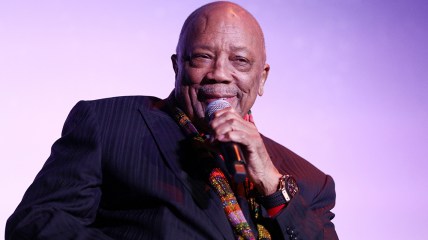National Museum of African-American Music provides beacon of history by engaging participation
The Black music museum in Nashville gives visitors a thorough insight into the history of Black American music.
One year ago, the National Museum of African-American Music (NMAAM) opened in Nashville in conjunction with Martin Luther King, Jr. Day. Initially, it was only open to the public on the weekends due to the COVID-19 pandemic.
With 12 months of operations in its rearview, the museum is finally open for daily operation. Nestled in heart of Music City’s famed Broadway thoroughfare full of bars, restaurants, and venues that all play live music, the presence of this institution offers the rich history of the city’s Black musical roots before it became the country music capital of the world.
After being conceptualized in 1998, officially named in 2011, ground was broken in 2017, and a global pandemic delaying its opening by four months, the NMAAM took over two decades to come to complete fruition. To say that it was worth the wait would be an insult, let alone an understatement.
The NMAAM is an all-encompassing exploration of the history of Black innovation, adaptation and improvisation. It excels at not only providing the proper historical backdrop for visitors to understand the origin and evolution of Black music, but it also gives them the perspective via first-hand experience. It does this with a miraculous and meticulous dedication to interactive interfaces.
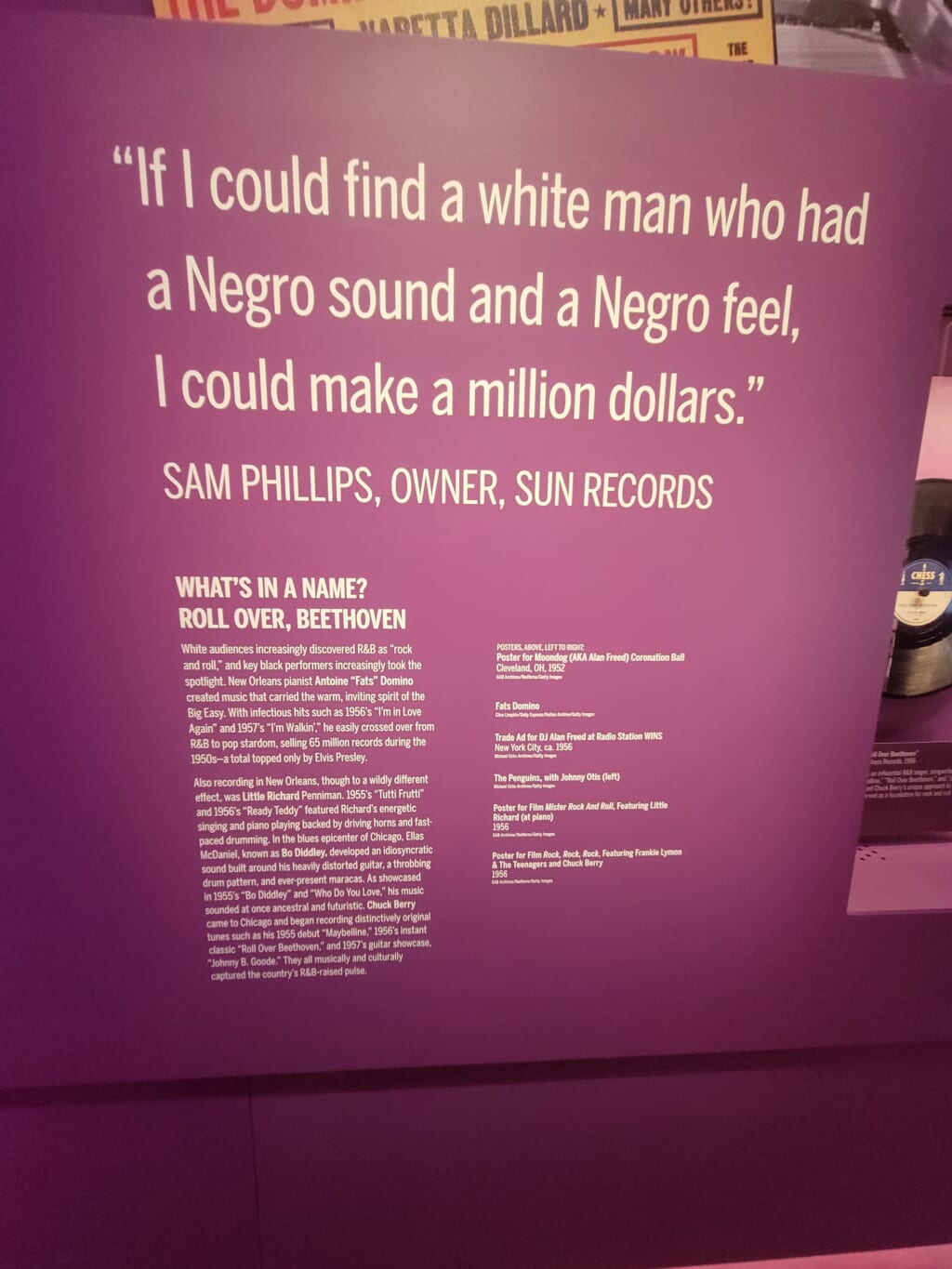
Through breathtaking touchscreen technology, visitors can create their songs, improvise on be-bop tunes, make their own hip-hop beat and even sing with a virtual gospel choir.
The logline for NMAAM is “One Nation Under a Groove.” Derived from the hit 1978 Funkadelic song of the same name, it’s a manifestation of how we are all connected through our rhythm, determined by both our internal, genetic ancestry as well as our external shared experience of hardship, community and perseverance.
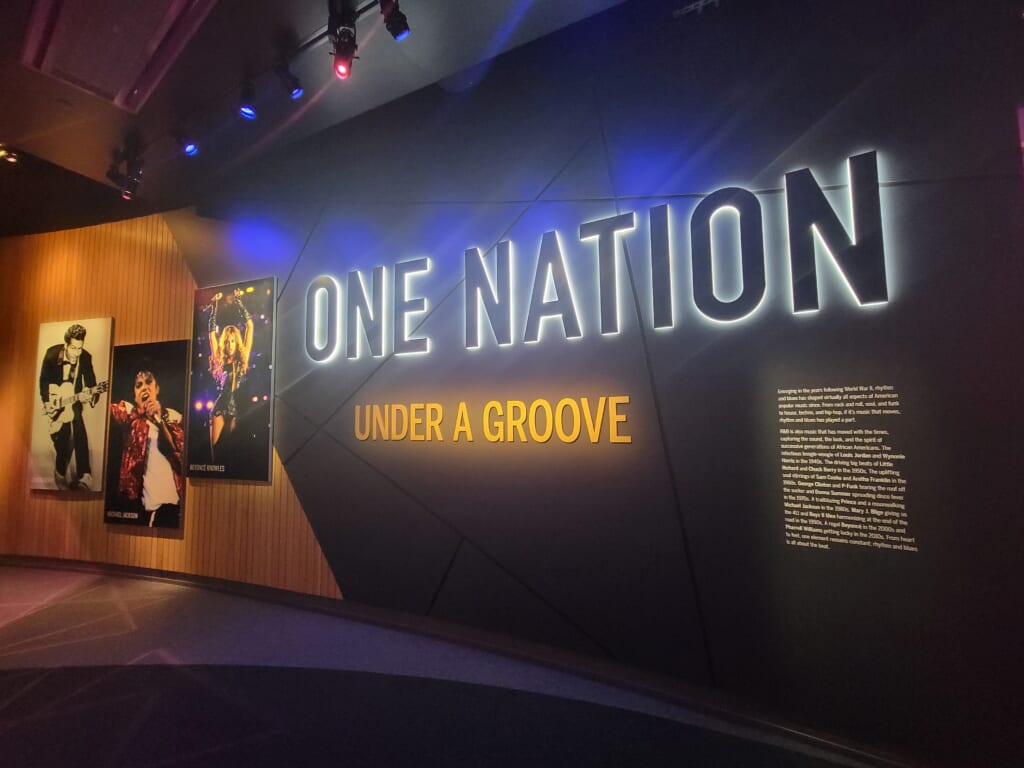
When you enter the museum, you are greeted by the Rivers of Rhythm, the hallway that serves as the introductory conduit of the main museum experience. It traces the origins of African American music back to 15th century Africa, through the transatlantic slave trade, Reconstruction, the Great Migration and the civil rights movement, all the way to the 21st century.
In the Rivers of Rhythm, visitors can step up to the LED display counter to read about and listen to the music of each of the aforementioned eras. On its walls are photos, videos and quotes from figures of each era that described American life at the moment, from Amiri Baraka to Scott Joplin.
From the Rivers of Rhythm, the museum branches off into its rooms and sections; Jazz, Soul, Gospel, Crossroads and more.
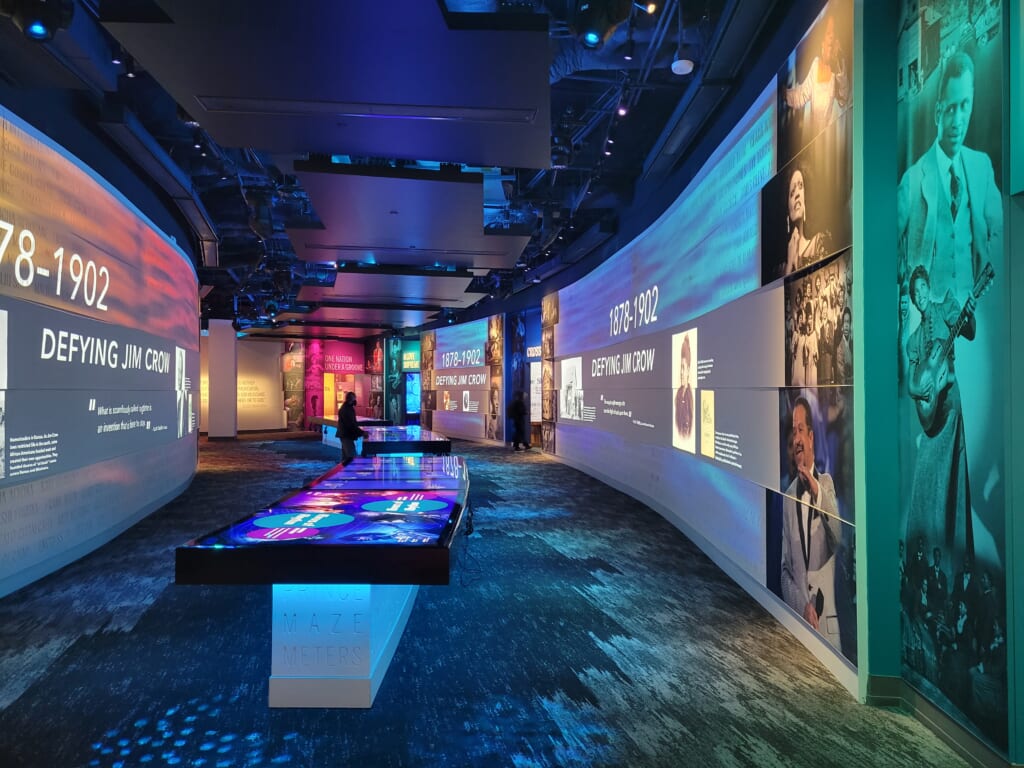
One of the highlights is the Hip-Hop Nation room. It beautifully displays artifacts like the 1992 summer preview edition of Vibe Magazine and an original Def Jam vinyl pressing and sleeve of LL Cool J’s first single, “I Need a Beat.”
Not only are we given information about the formation of hip-hop, rap, graffiti, DJing, and breakdancing, but also the bleak and political backdrop of Black American life before DJ Kool Herc’s after-school Bronx party on Sedgwick Avenue back in 1973. It breaks down how hip-hop affected business, entrepreneurship and politics.
Before vacating the Hip-Hop Nation, one can make their own rap beat. An LED screen gives listeners a chance to choose a vibe from a New York style break-beat to the melodic slush of the Dirty South, adding elements of percussion, vocals and bass.
Onto the A Love Supreme room, where you are greeted with artifacts of American Jazz music like Louis Armstrong’s trumpet. Visitors can partake in the music of the genre’s greatest talents.
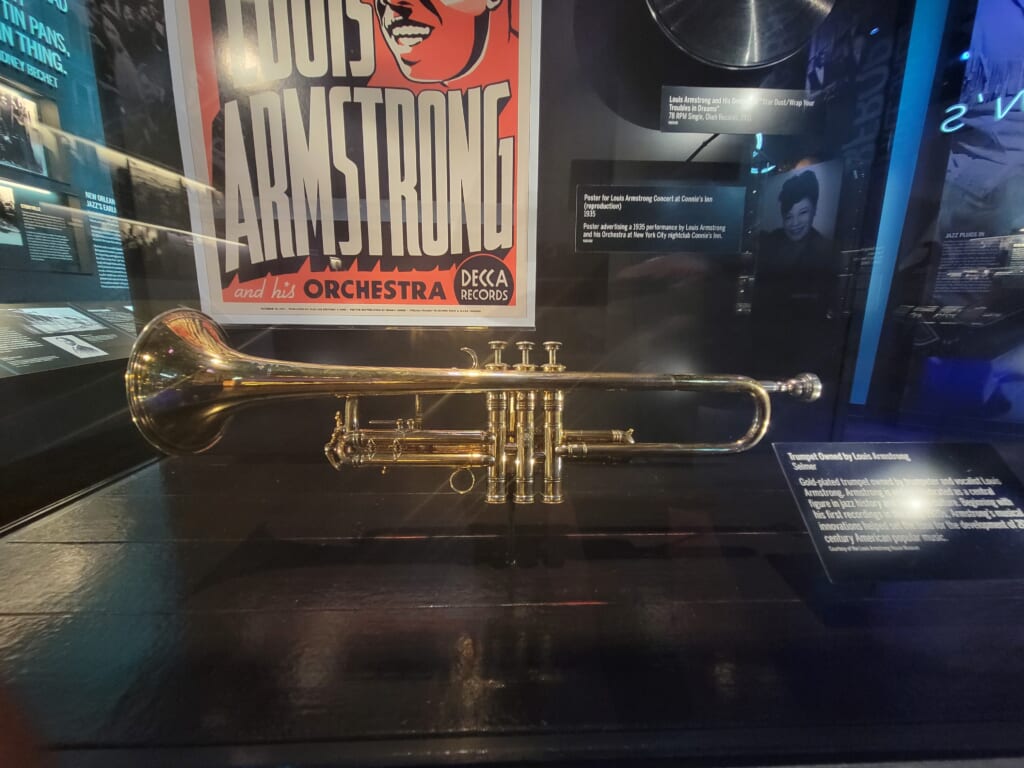
In “Roots & Streams,” visitors will be able to “discover artists and their music through connections.” After putting headphones on, you can find an artist, like Herbie Hancock, for example, and play three of his songs. In the LED touchscreen, you’ll see Hancock surrounded by links to different artists in a diagram: His influencers — Miles Davis, Bud Powell, Horace Silver, Thelonious Monk, his peers — Jimmy Smith, Keith Jarrett, and even his followers — Marcus Roberts and Robert Glasper.
From there, you can pick any of of artists, and the cycle continues. It’s an exquisite way to track how the music has been passed down, while tracing not only the enduring legacy of our ancestors but the innovative ways each generation take their teachings to the next level.
You can also play your own instrumental solo on a jazz record — sort of. You choose an instrument, like the trumpet or saxophone, and being the stroke of your finger, you can fashion an improvisation over a jazz tune in your headphones.
In the Soul and R&B room, you can make your own hit. Much like making a hip-hop beat, you’re given a song demo of a vocal and piano and you can add elements layer by layer. You have over 250 combinations with which you can create a final product.
The museum provides a digital wristband that allows visitors to swipe and collect the music that they hear and create.
The NMAAM is an essential experience for anyone who loves music — Black in origin and otherwise. “African-American” may be in the title, but the NMAAM shines at proving that all American music derives from African-American lineage. Make this trip and your life will be changed for the better.
Have you subscribed to theGrio’s “Dear Culture” podcast? Download our newest episodes now!
TheGrio is now on Apple TV, Amazon Fire and Roku. Download theGrio.com today!
